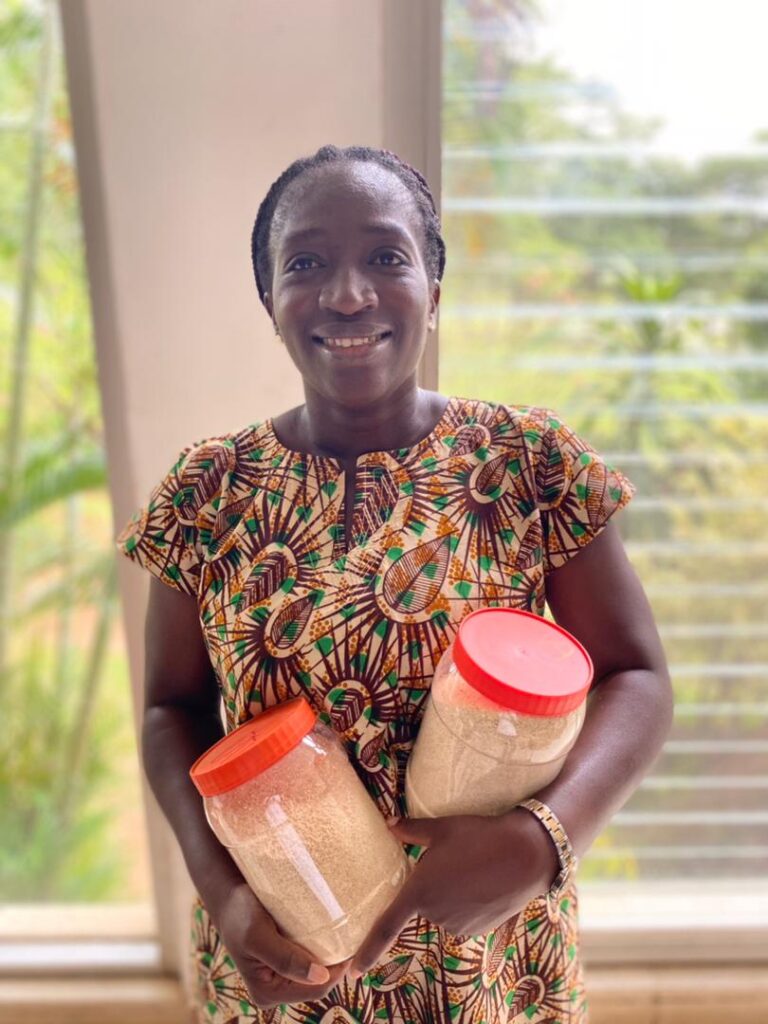
The American Soybean Association’s World Initiative for Soy in Human Health program and strategic partner, Leticia Amoakoah Twum, recently published a paper in the International Journal of Advanced Biological and Biomedical Research that further support the viability of a soy-gari blend for consumers. Their peer-reviewed study, A Food-Based Intervention to Meet SDG 2: Consumer Education Influence on Willingness to Purchase a Nutritionally Improved Staple Food in Ibadan-Nigeria, explores the protein value and commercial viability of a popular dish blended with soy in Nigeria. Gari is a widely consumed staple food across the continent.
A key finding of the research suggests that all countries where gari is a staple consider fortifying it with soy to enhance its nutritional value. It could address food security issues while also paving the way for more U.S. soy for food blends in Africa.
WISHH’s Africa Division Regional Director Josh Neiderman and technical adviser Sofolabi Sofela joined Amoakoah Twum in authoring the paper. WISHH has long supported Amoakoah Twum’s research, initially backing her study on an iron-fortified soy flour-gari blend. That research demonstrated that the fortified product not only yields more for consumption but also significantly improves the nutritional value of traditional gari, which often lacks essential nutrients.
WISHH remains committed to advancing the commercialization of soy-based gari. The program continues to work closely with Amoakoah Twum on product marketing, consumer education, and taste-preference in the countries where WISHH operates.
